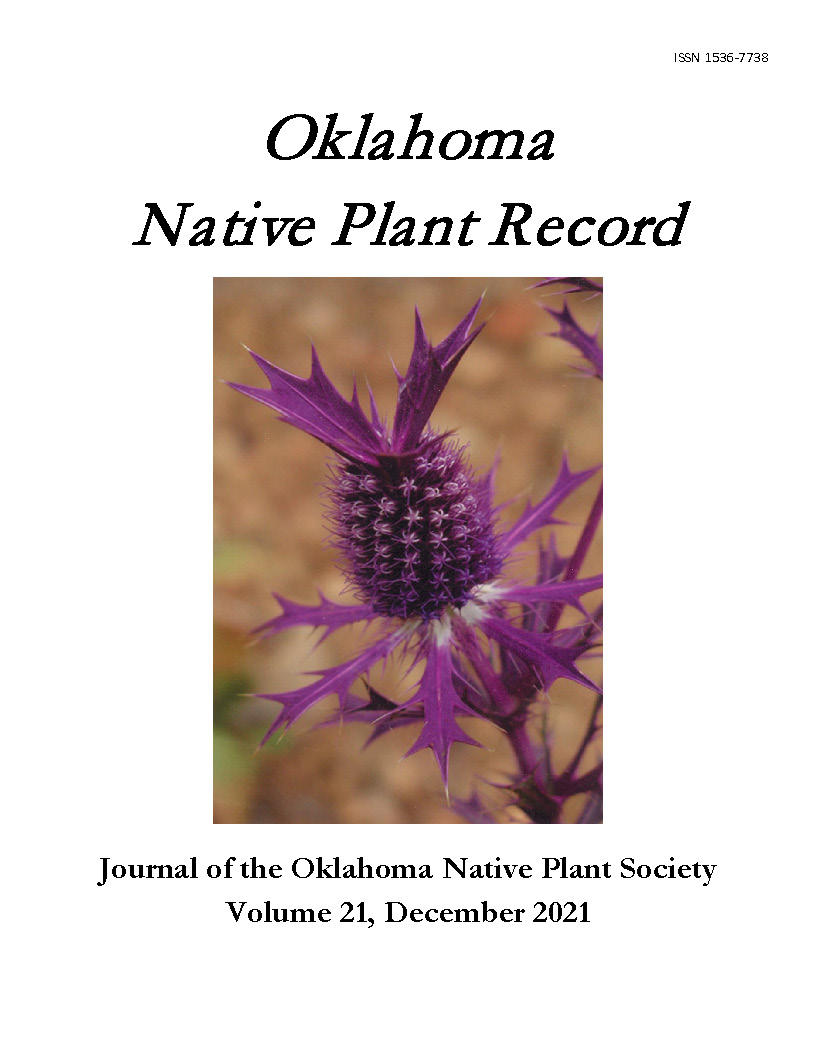Cold Stratification of Salvia azurea var. grandiflora Benth. (Lamiaceae) seeds to Break Dormancy
Main Article Content
Abstract
Seed dormancy and its maintenance rely on a range of environmental signals and cues such as light, temperature, soil pH, and moisture. A significant contributor to the cycle of dormancy and germination is temperature. Salvia azurea var. grandiflora Benth. is an Oklahoma native perennial that produces blue flowers with one seed per flower. Seeds were collected from four sites in Oklahoma and Cleveland Counties, OK, and randomly assigned to one of three treatment groups: no cold stratification, 3-week cold stratification, and 6-week cold stratification. Seeds were monitored daily, and seed germination date was recorded for analysis. Survival analysis indicated there was a significant correlation between the amount of time in a cold stratification environment and number of seeds that germinated. Seeds in the 6-week cold stratification treatment group exhibited increased germination compared to the other two treatment groups.
Article Details

This work is licensed under a Creative Commons Attribution-NonCommercial-ShareAlike 4.0 International License.
Articles (c) The Authors
Journal compilation (c) Oklahoma Native Plant Society
Except where otherwise noted, this work is licensed under a Creative Commons Attribution-NonCommercial-ShareAlike4.0 International License, (CC BY-NC-SA 4.0) https://creativecommons.org/licenses/by-nc-sa/4.0/, which permits unrestricted use, distribution, and reproduction in any medium, provided the original work is properly attributed, not used for commercial purposes, and, if transformed, the resulting work is redistributed under the same or similar license to this one.

